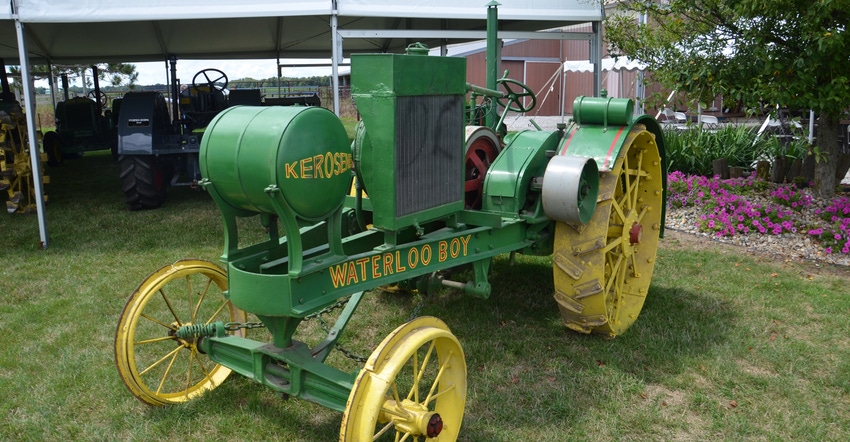
Finding the Waterloo Boy parked on the Fouts farm near Camden, Ind., on Aug. 4 was no accident. That day, people gathered to celebrate 100 years of existence for the American Soybean Association. ASA was formed first as the National Soybean Growers Association on Taylor Fouts’ farm on Sept. 3, 1920. Taylor was the first president. He and his brothers, Finis and Noah, hosted 1,000 people from six states that day.
Marshall Martin, a longtime Purdue University administrator and antique tractor enthusiast, was charged with finding antique equipment to display on the farm during the celebration.
“I knew just where to go,” Martin says. “I felt it would be appropriate to have a John Deere Waterloo Boy on-site, since it just celebrated its 100th anniversary recently.”
The Waterloo Boy that appeared at the event is owned by Charlie Homsher and his son, Wayne, from Crawfordsville, Ind. Charlie once owned and operated the John Deere dealership in Crawfordsville and appeared in an article in Indiana Prairie Farmer.
According to tractordata.com, the Waterloo Engine Co. began producing the tractor in 1917. The company was acquired by John Deere in 1918, and production continued through 1924. More than 21,000 tractors were built and sold.
The Waterloo Boy Model N was the first tractor tested in the Nebraska Tractor Test program. The company claimed 12 drawbar horsepower but produced nearly 16 in the test. A farmer could buy a John Deere Waterloo Boy in 1921 for a suggested price of $1,051.
Information supplied by the John Deere Tractor Museum in Waterloo, Iowa, indicates that Deere’s board of directors was torn as to how to get into the tractor business. One piece of personal correspondence from an integral player suggests that if the board had waited much longer, the iconic tractor could have wound up painted Allis-Chalmers orange instead of John Deere green. The board acted, and as they say, the rest is history.
About the Author(s)
You May Also Like




